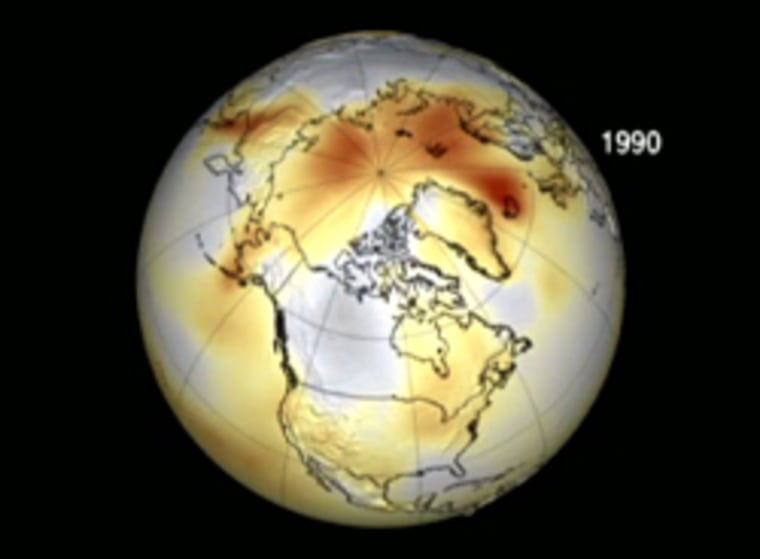Ground-level ozone, the same pollutant that makes smog, is responsible for a surprisingly large part of the spring and summer warming that’s been detected in the Arctic, NASA researchers said in a new study.
“Instead of being this tiny player, (ozone) can be more like 30 or 40 or even 50 percent of the cause of warming that we’re seeing in the Arctic now,” said lead author Drew Shindell, a scientist at NASA’s Goddard Institute for Space Studies. “It’s very dramatic.”
Carbon dioxide has long been considered a key cause of overall global warming because it remains in the atmosphere for a long time, Shindell said.
But low-altitude ozone — as opposed to the protective ozone layer observed at higher altitude — had until now been seen as fairly perishable and therefore less of a factor, he said.
Less of a global impact
Globally, ground-level ozone accounts for perhaps one-seventh of the global warming that carbon dioxide does, Shindell said.
But in the Arctic, the study found, ozone may be responsible for as much as 50 percent of the warming. That’s because many of the world’s most highly industrialized nations are in the Northern Hemisphere, and at relatively high latitudes.
For most of the year, that means the ozone produced in these countries is blown by prevailing winds north and east, toward the Arctic Circle. Manmade ozone comes from burning fossil fuels and vegetation, as well as activities like cement manufacturing and fertilizer use.
The study, based on a climate model using data from the last 100 years, found that Arctic temperatures remained normal until about 1950. After that, the model shows higher temperatures, widely spread around the Arctic region.
Arctic warming faster
“Global warming has really taken off since the 1970s,” Shindell said. “The warming in the past several decades has been more than it was the whole previous record, which is about 100 years before that.”
Arctic warming has been more extreme than global warming overall, he said, because as snow and ice melt they uncover darker-colored ground or water that absorb heat, accelerating warming.
NASA said that ozone’s impact on the Arctic is very small in summer months because much of it is destroyed at the source by chemical reactions fueled by sunshine.
“As a result, when it is summertime in the Northern Hemisphere, ozone-induced warming is largest near the sources of ozone emissions,” NASA said in a statement Tuesday. “The computer model showed large summer warming from ozone over western North America and eastern Europe/central Asia, areas with high levels of ozone pollution during that time of year.”
NASA said the study will be published in the peer-reviewed magazine Geophysical Research-Atmospheres, published by the American Geophysical Union.
